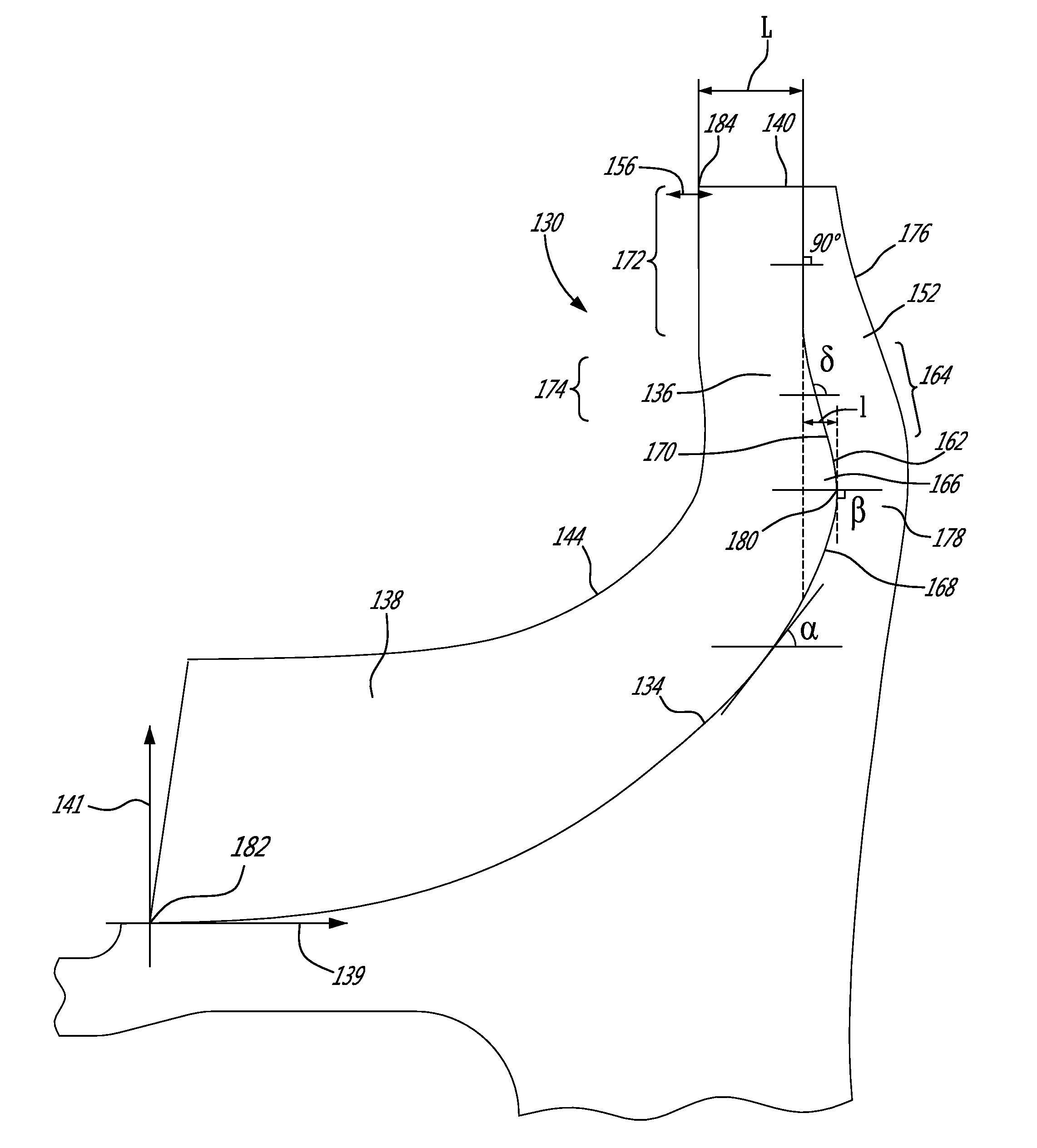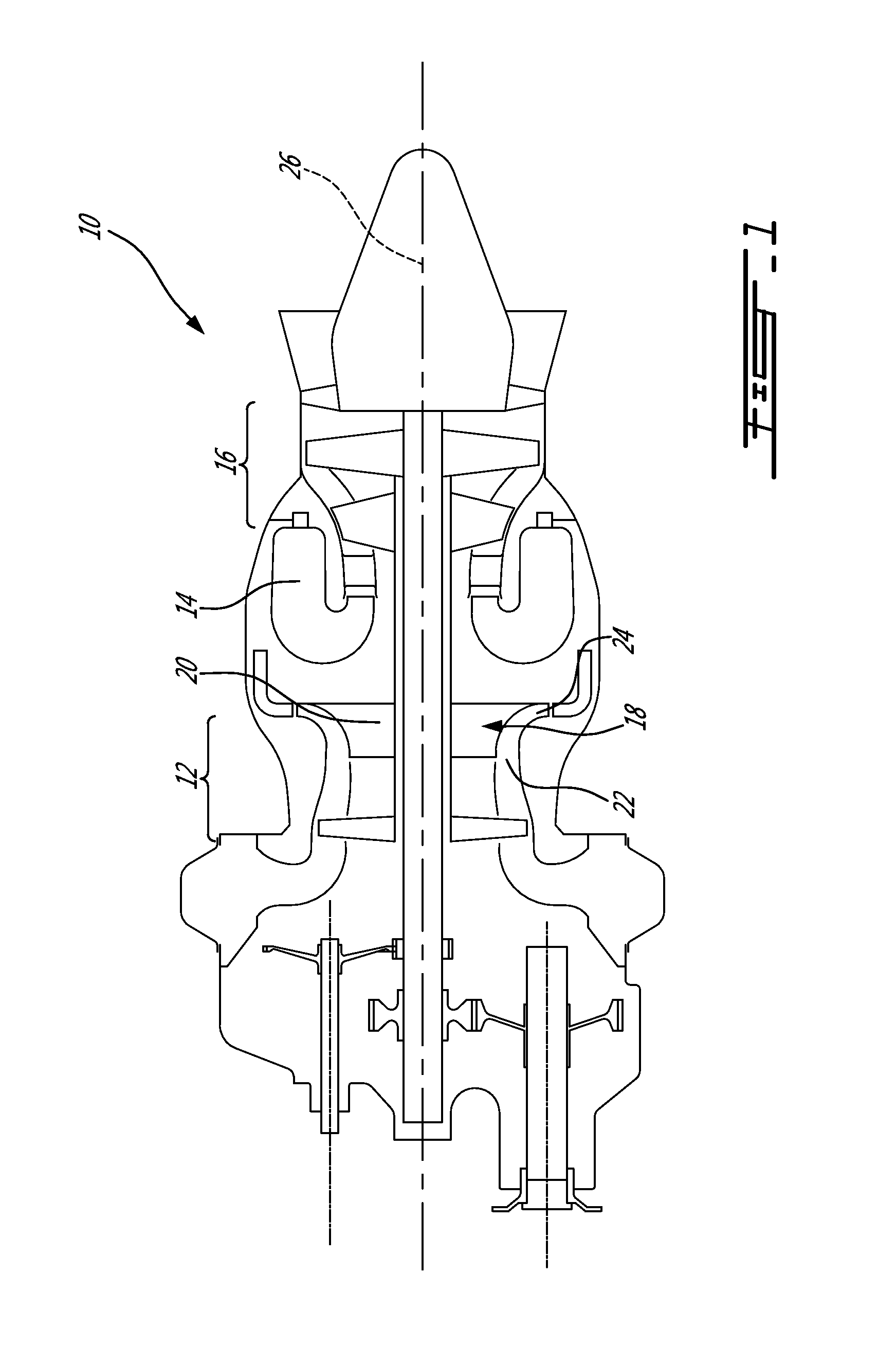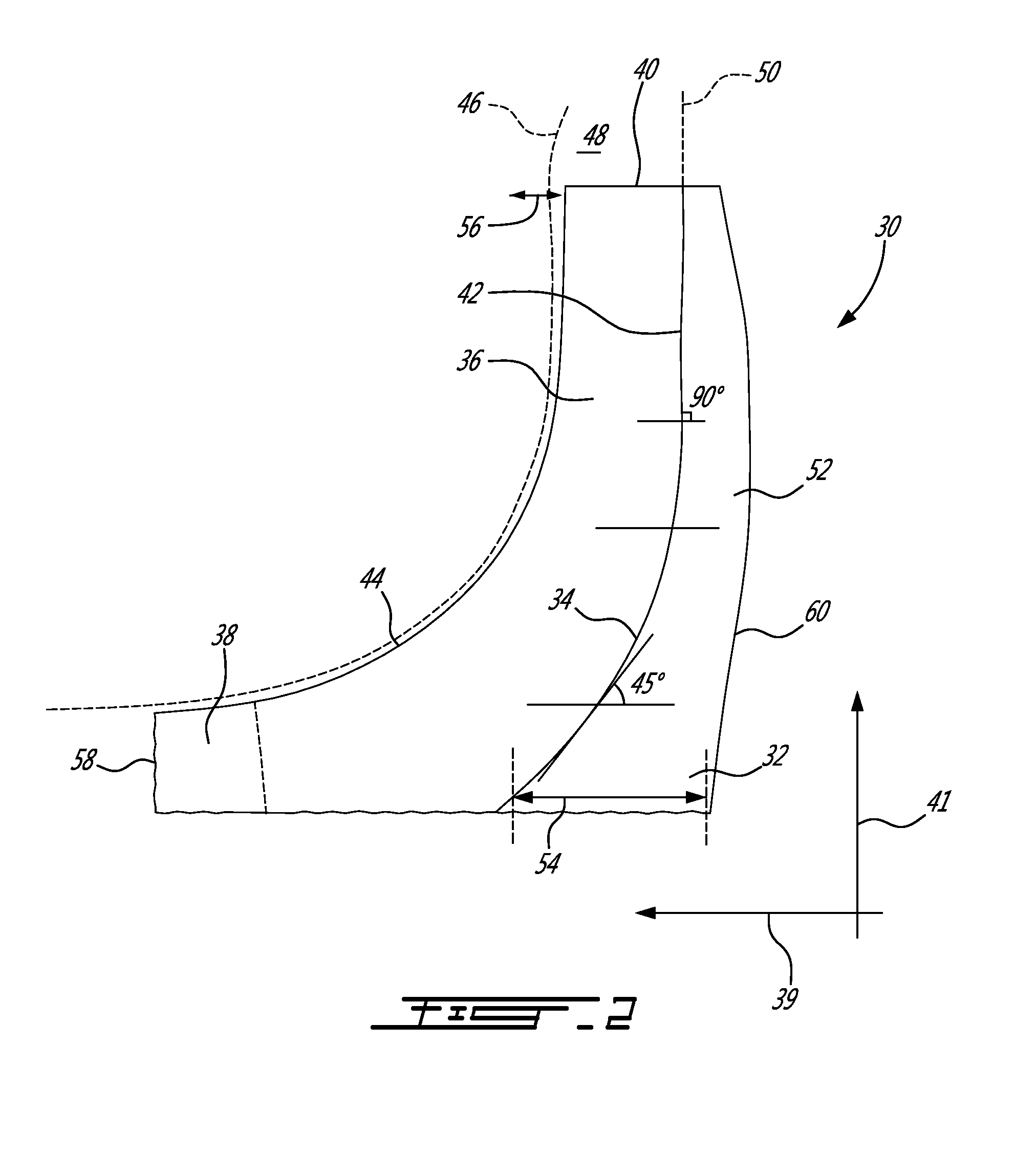Impeller
- Summary
- Abstract
- Description
- Claims
- Application Information
AI Technical Summary
Benefits of technology
Problems solved by technology
Method used
Image
Examples
Embodiment Construction
[0013]FIG. 1 illustrates an example of a turbine engine. In this example, the turbine engine 10 is a turboshaft engine generally comprising in serial flow communication, a multistage compressor 12 for pressurizing the air, a combustor 14 in which the compressed air is mixed with fuel and ignited for generating an annular stream of hot combustion gases, and a turbine section 16 for extracting energy from the combustion gases. The turbine engine terminates in an exhaust section.
[0014]The multistage compressor 12 includes a centrifugal compressor section 18 having an impeller 20 having an axial inlet 22, or inducer, and a radial outlet 24, or exducer, and is used in increasing the pressure of the air circulating an annular fluid path upstream of the combustor 14. The annular fluid path, multistage compressor 12, and turbine section 16 are centered around a main axis 26 of the turbine engine 10.
[0015]FIG. 2 illustrates an impeller 30 in accordance with the prior art. The impeller 30 has...
PUM
 Login to View More
Login to View More Abstract
Description
Claims
Application Information
 Login to View More
Login to View More - R&D
- Intellectual Property
- Life Sciences
- Materials
- Tech Scout
- Unparalleled Data Quality
- Higher Quality Content
- 60% Fewer Hallucinations
Browse by: Latest US Patents, China's latest patents, Technical Efficacy Thesaurus, Application Domain, Technology Topic, Popular Technical Reports.
© 2025 PatSnap. All rights reserved.Legal|Privacy policy|Modern Slavery Act Transparency Statement|Sitemap|About US| Contact US: help@patsnap.com



